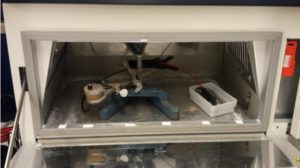TG Hilmarsson
Methylmercury (MeHg) is a potent neurotoxin which has gained special attention in recent years for its ability to bioaccumulate in organisms and biomagnify through the food chain of aquatic ecosystems. It can have a severe impact on human health and even lead to death in severely exposed humans. The formation of MeHg is biotically mediated and occurs mainly in oxic-anoxic boundary of sediments, soils and waters. Recent studies have shown that sunlight might contribute to the degradation of MeHg in the water column. The concentrations of dissolved organic matter and RSH groups or Hg-C bonds groups control MeHg degradation rates in lake waters, although the mechanisms behind remain poorly understood. Using different cutoff light filters, we have investigated how different parts of the spectrum affect MeHg degradation rates. We found that the UVB part of the spectrum is the biggest contributor to MeHg photodegradation and that DOC concentration is an important factor for MeHg degradation. We furthermore tested whether MeHg photodegradation constants were universal, by studying 22 lake waters. MeHg photodegradation constants range between 0.0013 and 0.0046. That further suggests that they are effectively universal.

… It was done using a spectrometer (BLACK Comet UV-VIS, StellarNet Inc., Tampa, Florida, USA) that was equipped with a fiber optic cable (STEF600-UVVis-SR, StellarNet) and a cosine receptor for UV-Vis near-infrared irradiance …





